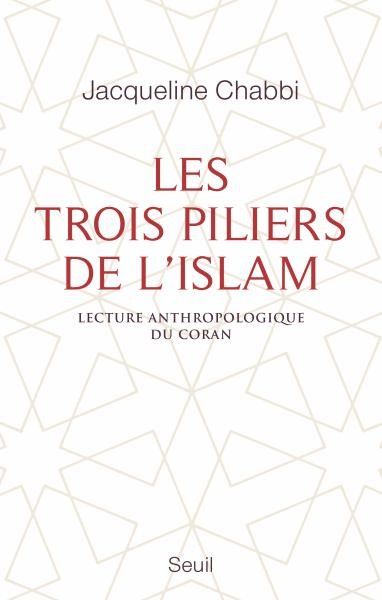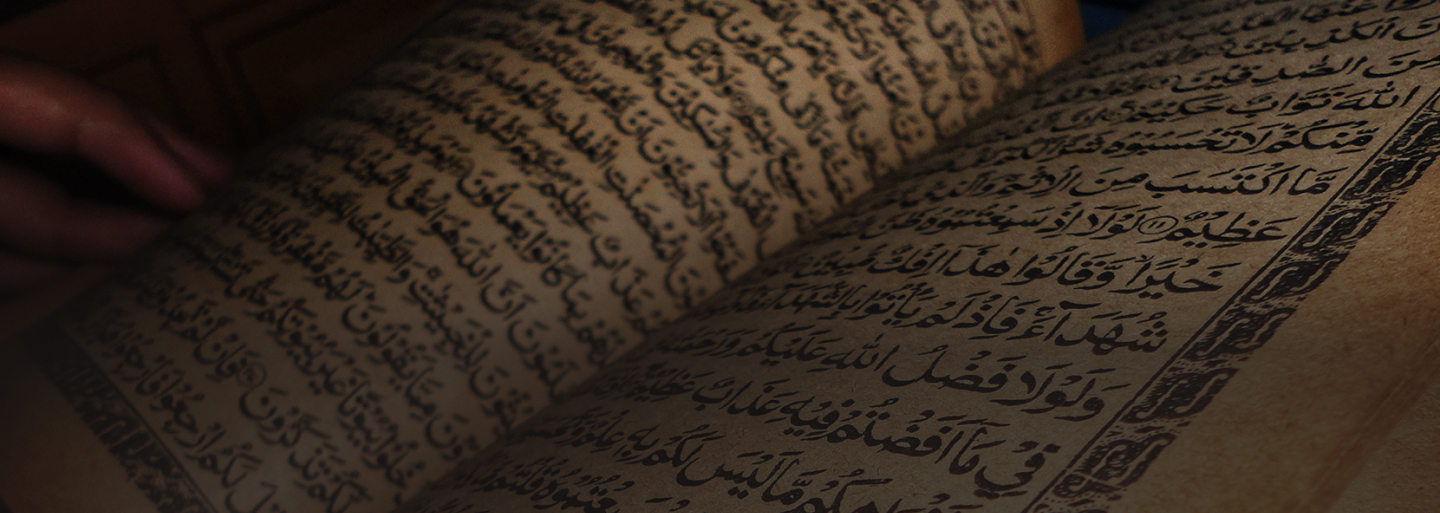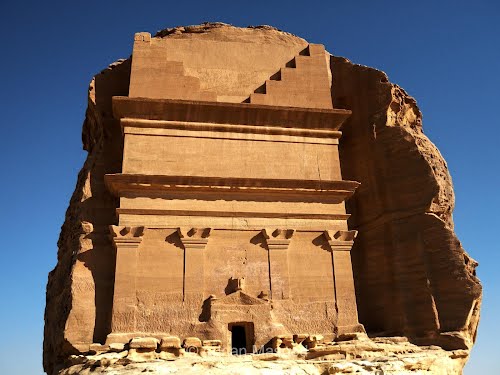Approaching a sacred text through the lens of historical anthropology requires seeing how the text is invested in the time and the social and human environment from which it emerged. Jacqueline Chabbi has worked to develop an application of this historical-anthropological approach to the Qur’an for over twenty years.
Chabbi maintains that, in order to understand the text of the Word revealed to the man Moḥammed, one must place it in its context within Mecca and Medina at the beginning of the seventh century. During this century, Islam started to emerge and slowly grow more powerful as a new belief system. Following the great extra-Arabic conquests, between the 8th and 9th centuries, Islam largely reinvented itself throughout the Middle East and Iran—outside of its original context. It was only then that the Islamic religion we know today was born.
Jacqueline Chabbi is Professor emeritus of Arabic studies at the University of Paris 8 Vincennes–Saint-Denis. She is one of the most well-known and respected specialists of early Islam, and even if her ideas are not shared by all, her hypotheses have not yet been invalidated. Born in 1943 in Brittany (Finistère), where she still lives, she was awarded her first doctoral thesis in 1971. She worked under the supervision of Professor Claude Cahen on ‘Abd al-Qâdir al-Jîlânî, a notable Baghdadi figure of the twelfth century who founded an important Sufi brotherhood. This project allowed her to prove how the representation of this medieval figure had been modified by successive generations. Speaking of this experience as a historian, she said: “I was very surprised to note that there had been an important difference between the historical life of the character who had been, in the eyes of all, a Muslim jurist originally from Azerbaijan, and the reputation that grew around him after his death.” Her critical approach toward historical objects has been deeply influenced by this first piece of research.
From 1973 to 1985, Chabbi published several articles in various journals about the historical origins of Islamic mysticism. Beginning in 1989, her focus turned more specifically to the question of the Qur’an, its environment, and the men to whom it was directed, with a remarkable article titled “The Arabia of the Imaginary” (published in Corps écrits, n.31, PUF). In the same year, a second article, “The Arab, the Qur’an” appeared in Le Grand Atlas des Littératures of the Encyclopaedia Universalis. Then in 1994, homage was paid to the eminent historian, Claude Cahen, in Itinéraires d’Orient (CNRS, Res Orientales); Chabbi set the tone with an important study called “The representation of the past in the first ages of Caliphate historiography: problems of reading and method.”
In 1997, she published Le Seigneur des tribus. L’Islam de Mahomet (“The Lord of the tribes. The Islam of Mohammed”) through Éditions Nôesis. This work—reissued in 2010 by CNRS Éditions—is based on a second thesis, dedicated to the study of representations of mentalities in seventh-century Arabia. The book, consisting of more than six hundred pages, laid the foundation for new ways of approaching the Qur’an, on the basis of a “sound method” (as described by André Caquot in the book’s preface.) The resulting analysis of the Qur’anic text by and for itself demonstrates that the continuity between the Qur’an and its original environment is more significant than had been affirmed—both by medieval commentators guided by the beliefs of their times, and by the contemporary Qur’anists whom those commentators have influenced.
A year earlier, the review of Arabic and Islamic studies Arabica published “History and Sacred Tradition: the impossible biography of Mohammed.” This important article describes the itinerary of the man Mohammed as far as we know it from post-Qur’anic sources, subjecting it to the test of history. The author casts a critical gaze not only at sacred tradition, which over-Islamized its past, but also at the gentleness with which this tradition is still treated.
In 2003, Chabbi published two articles, “Jinn” and “Whisper,” in the prestigious Encyclopaedia of the Qur’ân. And in 2008 a second book appeared, Le Coran décrypté. Figures bibliques en Arabie (“The Qur’an Decoded: biblical figures in Arabia,” Fayard). In it, she treats the question of the biblical traces which—starting from the second Meccan period (between c. 615 and 619)—became integrated into the Qur’anic discourse, nourishing its imagery and supplying new arguments for the polemic that sets Mohammed against the most eminent members of his tribe. The work is important because it shows how biblical figures are appropriated by the Qur’anic word, which recontextualizes them in its own tribal universe in order to serve its cause. It also demonstrates why these biblical figures often have little left to do with their place of origin. The Qur’an therefore takes the Bible less as an influence and more as set of stories to be recaptured or reconstructed. This evidently poses the problem of the extent to which Mohammed would have been confronted at Medina with the thought of Jewish rabbis and their tribes, who had long been resident in the oasis.
Finally, a third book, to appear in 2013, will focus on the three central functions articulated in the Qur’an. It deals with the alliance, the guidance and the gift. Chabbi intends to demonstrate how these three major functions were shared between the world of men and the holy Lords of pagan Arabia, who survived in the Meccan residence, Rabb al-Bayt—a denomination which bit by bit became Ilāh, divinity, then Allāh, the Divinity.
The historian attempts to reconstruct pasts and societies that are no more. When confronted with a sacred text such as the Qur’an, it is helpful to grasp the meaning of those mental and symbolic representations that are expressed in the words of the text: representations which cannot be detached from their original historical setting. The historian questions these representations—the beliefs that were woven into them and the images they elaborated. In this sense, she or he must, like Jacqueline Chabbi, attempt to establish a dialogue with those who share in the beliefs that have been passed down from the period in question to the present day.
*We would like to thank Chris Rose for having read and translated this article.
© International Qur’anic Studies Association, 2013. All rights reserved.
 In the latest installment of the Review of Qur’anic Research, Gabriel Said Reynolds reviews Jacqueline Chabbi’s Les trois piliers de l’Islam: Une lecture anthropologique du Coran. In this volume, Chabbi makes the case that Islam as we know it from medieval sources is not the same as Islam as it was in its original Arabian context. According to Chabbi, academic scholars and pious Muslims alike too often fail to recognize elements of Islam which were introduced in later centuries, and too often assume that medieval ideas about the Qurʾan reflect what the Qurʾan meant to its original, Arabian audience. Les trois piliers de l’Islam is her effort to set things straight, to recover Islam’s original message.
In the latest installment of the Review of Qur’anic Research, Gabriel Said Reynolds reviews Jacqueline Chabbi’s Les trois piliers de l’Islam: Une lecture anthropologique du Coran. In this volume, Chabbi makes the case that Islam as we know it from medieval sources is not the same as Islam as it was in its original Arabian context. According to Chabbi, academic scholars and pious Muslims alike too often fail to recognize elements of Islam which were introduced in later centuries, and too often assume that medieval ideas about the Qurʾan reflect what the Qurʾan meant to its original, Arabian audience. Les trois piliers de l’Islam is her effort to set things straight, to recover Islam’s original message.

